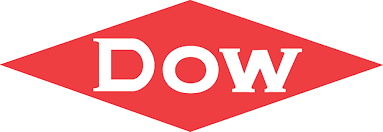The Dow Is on Track to Post Its Best June Since 1938

Over the weekend, Donald Trump tweeted about news that the stock market has seen its best June in decades. “Thank you Mr. President!” ended the note.
Indeed, the S&P 500 has so far seen a 7.3% month-over-month jump as of June 21, the highest percentage gain over that time period since 1955. The Dow Jones Industrial Average was up 7.8% over the same period, the best performance since 1938, according to stock market data reviewed by Fortune.
Good news? Maybe, but performance during other months of this year have been modest in comparison and experts say an flashback to irrational exuberance is generally not a harbinger of good news.
The numbers for June are unusually high compared to the rest of 2019, and so aren’t representative of what the markets as a whole have been doing. Although year-to-date S&P returns have been 17.8%, more than a third of those gains have come in June alone. The Dow is up 14.7%, with June kicking in more than half those gains.
“In May, we had our first 5% pullback of the year,” said Robert Phipps, director and portfolio manager at Per Sterling Capital Management. “Much of what we’re seeing in June is a rebound of the sell-off we saw in May.” The June jump is “irrationally” based on “something beyond perfection,” said Tony Roth, chief investment officer of Wilmington Trust.
Driving the recent rally is a collection of factors which have one common denominator: They all involve some wishful thinking. One is the prospect of a trade deal between the U.S. and China at the G20. “I think the best we could get is some wording that we made some progress so we’ll hold off on the $ 350 billion in [additional] imports at tariffs of 25%,” Phipps said.
Although Trump announced the new round of tariffs, they are not yet active and could be withdrawn. Economists have expressed concern that the new round, announced in May, would have significant negative effects on the economy, as Fortune has reported. “The market doesn’t believe Donald Trump’s threat to impose new tariffs,” Roth said. “If he puts the tariffs on, then he’s dead, politically. If he does, the market has a long way to fall to price that in.”
There is also a strong chance, according to some trade experts, that there might be no meeting at all, as Fortune has previously reported.
As for rate cuts, rates are so low that the Fed probably cannot drop them far enough to have a significant and lasting effect on the economy. “The reasons businesses and people aren’t spending more are uncertainty and lack of confidence,” Roth said. “Capital is abundantly available right now. Cutting rates by 25 to 50 basis points won’t have a meaningful change on behavior.”
“It normally takes 500 to 600 basis points to pull out of a recession but all they have is 250,” said Phipps.
Not everyone assumes the month’s gains are precarious. “Although geopolitical risks are high and may not recede in the near term, economic fundamentals remain strong and equities are still very attractive relative to fixed income securities,” said Alfredo La Rosa, chief investment advisor at Intercontinental Wealth Advisors. “Consumer debt and net corporate leverage are not excessive. We do expect that company earnings will continue to grow in high single digit numbers for the remainder of the year. Further support is being fueled by buoyant consumer optimism and the fact that major developed markets’ central banks are pivoting to more dovish policies. The chances that the S&P 500 and Dow maintain their positive momentum through the month and the next quarter are very high, especially if geopolitical risks somehow diminish.”
What’s next, then? A big helping of uncertainty and hope that everyone keeps spending. “If the consumer is removed as the supporter of the economy, we’re in real trouble,” Phipps said.
So enjoy June—or at least what’s left of it.
More must-read stories from Fortune:
—Slack went public without an IPO. Here’s how a direct offering works
—4 reasons to be skeptical about Facebook’s Libra cryptocurrency
—Bank of America CEO: “We want a cashless society”
—Fintech startup Tally has raised $ 50 million to automate people’s finances
—Listen to our new audio briefing, Fortune 500 Daily


